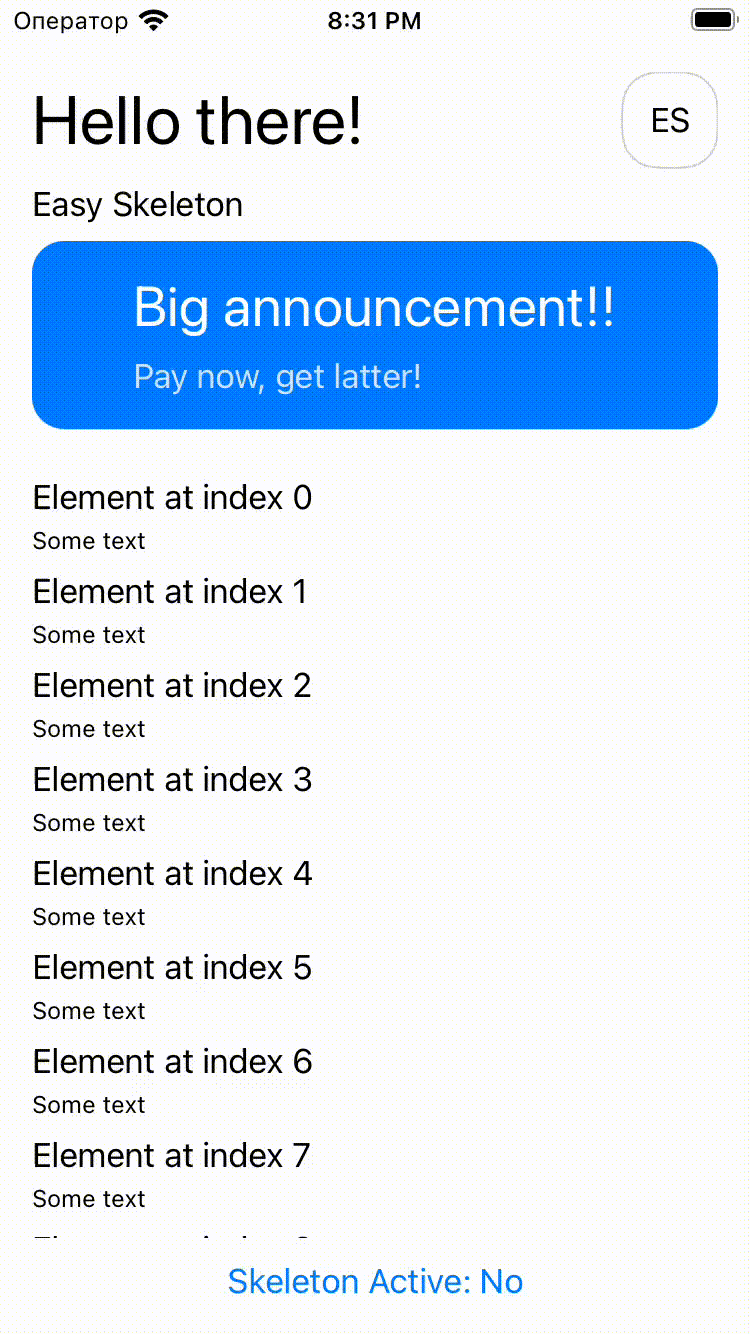EasySkeleton
 EasySkeleton copied to clipboard
EasySkeleton copied to clipboard
Lightweight and fast skeleton library for SwiftUI
EasySkeleton
Fast and lightweight skeleton framework for SwiftUI!

How to use
We use a simple system with environment to pass information about the skeleton across all the views, but you should tell your layout where and how it should be displayed. Some examples:
import EasySkeleton
struct ContentView: View {
@State private var isLoading = true
var body: some View {
VStack {
Text("Some title")
.skeletonable() // This text will be skeletonable
Text("Body")
.skeletonable() // This text will be skeletonable too
}
.setSkeleton($isLoading) // Control skeletonable state
}
}
But what if you want to design your own skeleton? You can do so with modifiers:
Text("Some title")
.skeletonable()
.skeletonCornerRadius(16) // Your skeleton will be rounded. Great!
And what if for example, you want to use a custom style or animation ? Its easy! Just use the extra arguments in your setSkeleton method:
struct ContentView {
@State private var isLoading = true
var body: some View {
VStack {
/// ...
}
.setSkeleton(
$isLoading,
animationType: .solid(Color.blue), // by default is .gradient(Color.skeleton.makeGradient())
animation: Animation.default, // Default animation
transition: AnyTransition.opacity // Transition how skeleton appears or disappers.
)
}
}
To disable the skeleton in your child views just call the unskeletonable method
struct Row {
var body: some View {
VStack {
/// ...
}
.unskeletonable() // Your view will not be skeletonable
}
}
struct ContentView: View {
var body: some View {
Row()
.skeletonable() // Doesn't apply on Row
}
}
EasySkeleton it a great fit to work with ForEach loops. You can apply the native ForEach and modify it with the skeletonForEach modifier:
struct NewsView: View {
var body: some View {
ForEach(items) {
NewsRow(item: $0)
}
.skeletonForEach(itemsCount: 4) { _ in // only applies on ForEach component to avoid using `SkeletonForEach` or similar component
NewsRow()
.skeletonFrame(height: 56) // Set frame for skeleton overlay, but also, you can set native `frame()` modifier.
}
}
}
And last, but not least! The main killer feature: Reading your skeleton state on the fly using Environment feature!
struct Header: View {
@Environment(\.skeleton) private var skeleton // You can grab skeleton state from any view!
var body: some View {
Button("Press to me") {
/// ...
}
.disabled(skeleton.isSkeletonActive) // Control your layout when skeleton is active!
}
}
Contributing
You're welcome to change that library and I hope we will make a best tool for any developer!